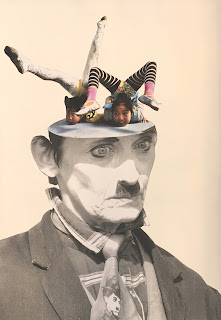What went well?
- I think that taking the photo outside worked really well in terms of lighting. The harsh morning light adds a really nice drama to the image which complements the subject matter really well.
- I also think that my eye peeling through the shrubbery in the first image works well. It gives a character to the hand grabbing the man (Jerry). I also love the way that it is lit, which happened totally by chance. I tried to re-inact it but I couldn't.
What Challenges did I face?
- I really struggled with the fact that I had to be in the photo because it meant that I couldn't take it myself. I got my brother to take it but I found that all of his photos were totally not what I envisioned. He kept photographing me and the man from the wrong angle. Fortunately, the fact that it was quite a close up photo meant that I was able to take it my self in the end although this was slightly awkward.
- I also really struggled to make the man stand up because his one foot was not enough to support him. In my original images I had him balancing on a silver screw driver, which looked messy. I definitely think that the small tree was a perfect solution and I think that the shrubbery also works well to create a more interesting setting.
What could I have done differently and how am I going to move forward?
- I prefer the whole composition of the top image but the man looks so much better in the bottom one and I like how you can see his whole body. I was suck between them and tried o take another but I couldn't get the light right. However, my whole family preferred the top one because they thought that the photo was better as a whole, so I'm going to present that.
- Although most of my time was spent making the man, I learned that he was only one element of my composition (something I hadn't thought about until after I had made him). If I were to repeat this brief I would have considered this at the start and planned the whole image rather than just one element of it.
- I really enjoyed making my man out of plasticine. It was interesting that I found designing my character three-dimensionally easier than I did two-dimensionally. This is a valuable thing to know for future briefs and three dimensional illustration is something I'd like to do more of.


















































